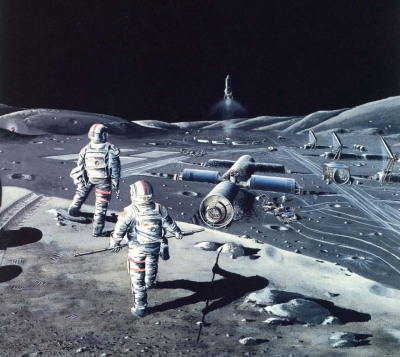
Astronauts aboard Apollo 16 installed a linear telescope called the Far Ultraviolet Camera/ Spectrograph on the moon in April 1972. The gold-plated 22-kg device mounted on a tripod was the first telescope used to make astronomical observations and take photographs of Earth in ultraviolet light from the surface of another planetary body. The astronauts brought back the film, leaving behind the telescope on the moon.
The Chinese were the next to install a robotic UV telescope on the moon in 2013, which is still functional. Operated remotely from Earth, it has observed stars, galaxies, quasars, novae, etc. Now NASA has plans of planting radio telescopes on the far side of the moon. Scientists believe that the far side of the moon being shielded from the radio signals of Earth is perfect for radio astronomy.
On Earth, there are many obstacles to observing the skies – our atmosphere, light pollution, weather, etc. In contrast, space telescopes like the Hubble and Chandra have given us brilliant images of the universe. So a telescope on the moon seems the most logical step.
An observatory on the moon has the advantage of 14 days of continuous darkness with no atmosphere or light pollution. This ensures uninterrupted and clear observation of astronomical objects.
On the other hand, the lack of atmosphere means that the linear surface experiences extreme temperature differences – the temperature can be as high as 100ºC during the daytime and -173ºC at night. The telescope has to be specially engineered to withstand such temperature extremes. The moon also experiences many moonquakes. Lastly, building an observatory on the moon is prohibitively expensive – it can cost more than $1 billion.
Picture Credit : Google



